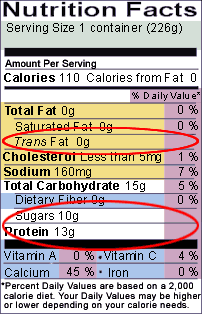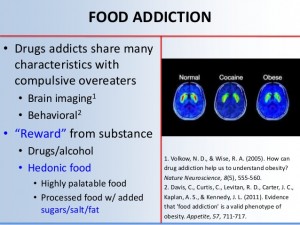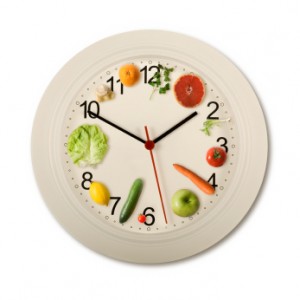If you’re looking to cut back sugar this year, then you are on the right track. Excess sugar, particularly added sugars, can not only lead to weight gain but also diabetes, heart disease and tooth decay. In fact, even if you are thin and eating reasonably, you may still be consuming too much added sugars without even knowing it, which can harm your health regardless of being at a healthy weight.
Before we get started on how to cut back our sugar intake, let’s make a distinction between added sugars and natural sugars. Natural sugars are found in healthy foods like fruits and vegetables. These foods are healthy and contain water, fiber and various nutrients. Added sugars, on the other hand, are those that are added to foods; foods which typically have little nutritional value.
Thus, in order to lose weight and optimize health you should do your best to avoid foods with added sugars. However, some sugar in your diet is unavoidable. According to the American Heart Association, men should get about 150 daily calories from sugar (9 teaspoons), and women should get about 100 daily calories from sugar (6 teaspoons).
Here are some ways to start reducing sugar:
1. Don’t add it to foods
The easiest way to cut back on sugar is to simply not add it. The biggest targets for adding sugar is cereal, coffee and tea. Instead, try to substitute with natural sugar substitutes. Use things like organic honey, agave or stevia in the raw.
2. Eliminate fruit juices and soda
Juices and sodas can seem harmless, but they contain tons of added sugars that benefit you in no way. While a glass of freshly squeezed orange juice may be OK once in a while, for the most part you want to eliminate soda and fruit juices. If plain water isn’t your thing, buy some all natural crystal light packets, or add some fresh fruit or even vegetables and herbs like cucumbers and basil, to your water to add a fresh flavor.
3. Limit fruits
While fruits contain fiber and good nutrients, they also contain quite a bit of sugar. Therefore, fruit should not be eliminated from the diet but rather limited to 1-2 servings per day. Go for lower-glycemic choices like grapefruit, apples and berries.
4. Read food labels
If you want to reduce sugar consumption, a good place to start is by knowing where all that sugar is hiding in the first place. Start reading food labels and avoid foods that have a lot of added sugars.
You may want to consider tracking your sugar intake for a few weeks. You will start to realize how much sugar you have actually been consuming and where you need to cut back. You will learn which types of foods are better and which should be limited or avoided.
5. Cream over milk
Believe it or not, milk is filled with more sugar than cream. Whole milk has 12 grams of sugar per cup, which is equal to 3 teaspoons of sugar (that’s half of the recommended daily sugar intake for women!).
And don’t be fooled by skim milk. Once all of the healthy animal fat is taken out, skim milk is essentially a sugary water. It may have less fat but it doesn’t have less sugar. Next time your drinking coffee or tea, add cream instead of milk. Unsweetened almond milk is also a good choice but may not give you the sweet taste you are looking for.
6. Contemplate complete avoidance
Some people are great with moderation. Other people have a hard time exercising willpower and can’t stop at just one. If you are one of these people, you may consider completely avoiding sugar altogether.
Sugary foods stimulate the same areas in the brain as drugs do. For this reason, people who would consider themselves ‘sugar addicts’ may lose control upon consumption. Instead of cutting back, consume healthy versions of your favorite sweets. You can use things like cocoa nibs, mashed banana, whole wheat flour, nuts and dark chocolate to make up healthy desserts.
7. Reduce or eliminate processed carbohydrates
Most processed carbs – like white bread, pasta, rice, crackers etc. – are loaded with added sugars and spike blood sugar levels quickly. Complex carbohydrates – things like brown rice, sweet potato, and whole grains – have less sugar content and release a longer lasting energy, so you don’t see that spike in blood sugar. Replacing simple carbohydrates (processed carbs) with complex carbohydrates will help reduce overall sugar intake.
8. Kick out trigger foods
Stay away from foods that will make you lose control! Nutella and ice cream are my triggers and I cannot keep them in the house. 1 tbsp of nutella turns into half of the jar and a bowl of ice cream turns into 4 heaping scoops. Get these foods out of your house and stay away from them at all costs.
9. Cut back slowly
Unless you are a sugar addict who can’t control themselves, your best bet is to cut back slowly, otherwise, your cravings may worsen. For example, if you can’t imagine life without soda, start by drinking half regular soda and half diet soda. As time goes on increase the diet soda until that’s all your drinking, then start cutting back on that until soda is eventually eliminated from your diet altogether.
If you like your coffee sweet, start by using half of your normal sugar amount and half stevia or truvia. Use the same process with the soda and eventually you may even come to enjoy a sugarless cup of coffee.
In conclusion
While sugar may taste delicious and give you a temporary feeling of pleasure, it’s not worth the health risks. Cutting back on sugar and getting as close to the recommended daily servings as possible is one of the best things you can do for your health.






